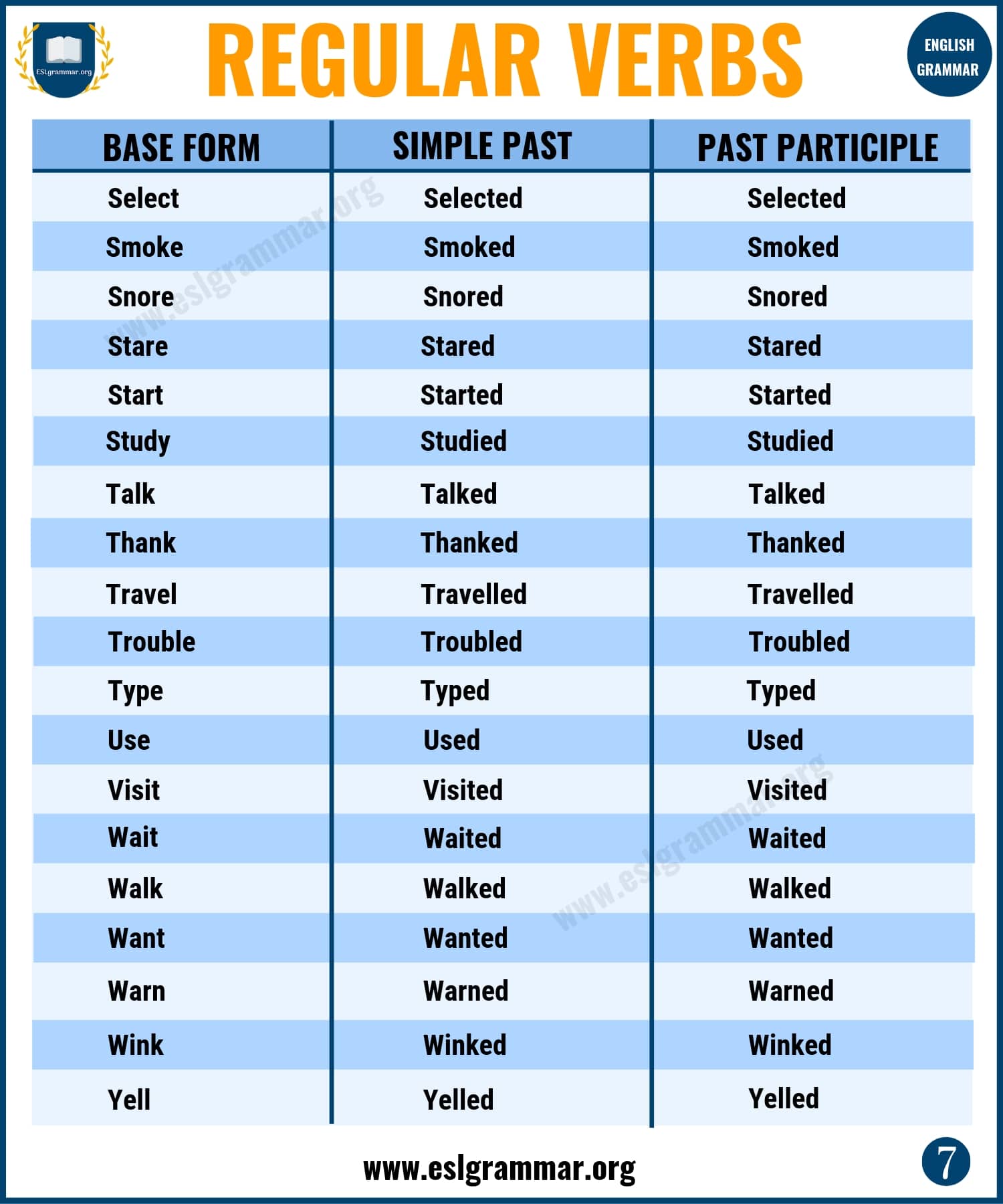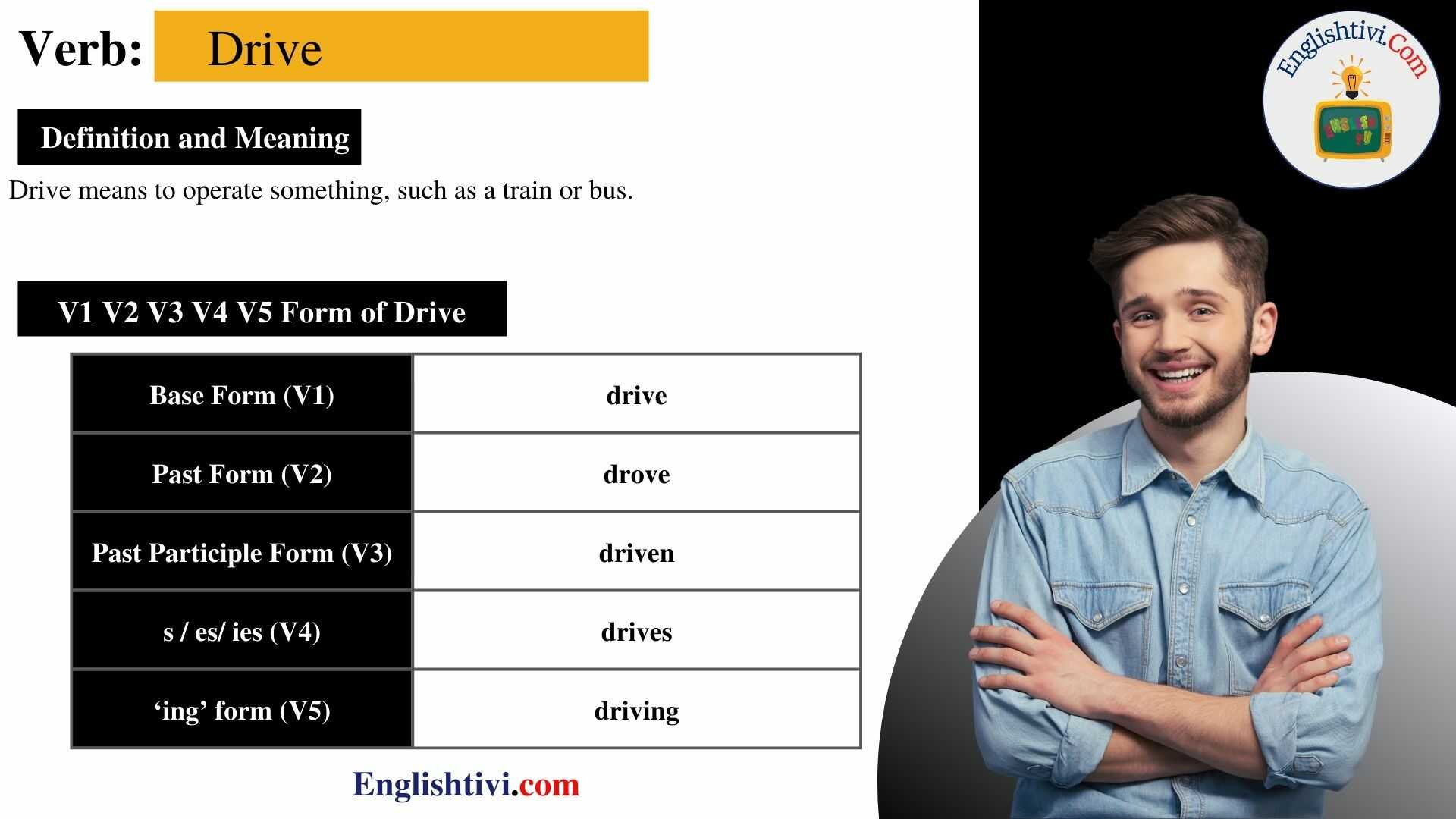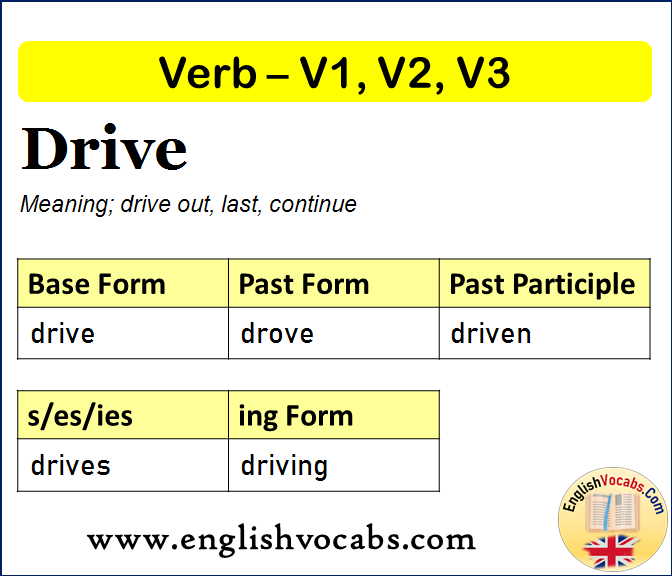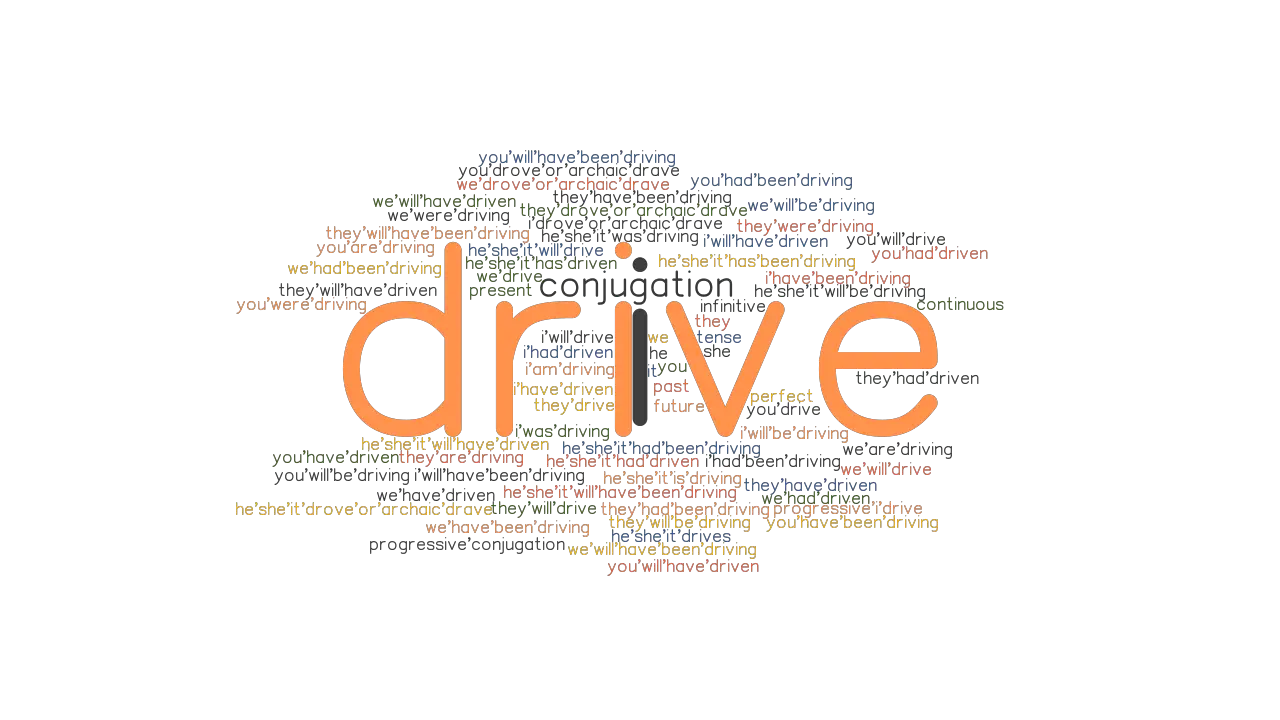
VERBS SIMPLE PAST AND PAST PARTICIPLE English Quizizz
Grammar Reference Irregular Verbs List Definition: Drive Irregular verb: To Drive Verb conjugation: Drive - Drove - Driven Meaning of 'To Drive' To operate and control a car or other vehicle Conjugation of verb 'Drive' Irregular Verbs Following a Similar Pattern Verbs like: Subscribe to Ad-Free Browsing

PPT Simple Past Tense and Past Participle PowerPoint Presentation
Past Participle driven Present Participle driving Present I drive you drive he/she/it drives we drive you drive they drive Present Continuous I am driving you are driving he/she/it is driving we are driving you are driving they are driving Present Perfect

Past Tense Past Participle Base Form 1.draw2.meet 3.drink 4.drive 5
10.11.2020 The English verb 'drive' is pronounced as [draɪv]. Related to: irregular verbs. 3 forms of verb drive: Infinitive (drive), Past Simple - (drove), Past Participle - (driven). Here are the past tense forms of the verb drive 👉 Forms of verb drive in future and past simple and past participle. What is the past tense of drive.

IRREGULAR VERBS Long list INFINITIVE PAST SIMPLE PAST
Conjugation of the verb Drive in all tenses: future, present and past. 🎮 Conjugation trainer for memorizing forms. LinguaBooster LB learning foreign languages.. Past Simple Past Participle Gerund. Simple tense . Present Simple Past Simple Future Simple. Continuous tense .

Drive V1 V2 V3 V4 V5 Base Form, Past Simple, Past Participle Form of
DRIVE Past Tense and Past Participle. The English verb "to drive" is an irregular verb that is used to express the action of transferring something to someone or something else. It undergoes changes in its base form, past tense, and past participle. The conjugation verb forms v1 v2 v3 v4 v5 "to drive" in different tenses is as follows:

Verbs Archives Page 77 of 104 English Vocabs
Past Simple: drove Past Partciple: driven Present Partciple: driving Third Person Singular: drives Definition: To operate, control, and direct the course of a car or other vehicle. Example (s): He drives an expensive red car. Tomorrow I'm driving to work. I learned to drive when I was sixteen. Similar verbs

Past tense of DRIVE Archives EngDic
Drop. Dry. Eat. End. Enjoy. drove is the past tense of the word drive. driven is the past participle of the word drive. drive past form, verb forms, v1v2v3, Infinitive.

Past Tense Of Go, Past Participle Form of Go, Go Went Gone V1 V2 V3
Here are other verbs V1 V2 V3 List. Here base form V1, past simple V2, past participle V3 form of the verb. 5/5 - (1 vote) Drive V1 V2 V3V4 V5 has five different forms: base form V1, past tense V2, past participle V3, present perfect V4, and present perfec.

PRESENT PERFECT
Conjugate the verb drive in all tenses: present, past, participle, present perfect, gerund, etc.

Verbs past patrticiple
Simple Past Tense He/She/It drove or (archaic) drave. I drove or (archaic) drave. You/We/They drove or (archaic) drave. Past Continuous Tense He/She/It was driving. I was driving. You/We/They were driving. Past Perfect Tense He/She/It had driven. I had driven. You/We/They had driven. Past Perfect Continuous Tense He/She/It had been driving.

50 examples of present tense past tense and past participle V1, V2 and
Past participle: been (used with auxiliaries to form-- present perfect tense: has been-, past perfect tense: had been- , future perfect tense: will have been- ) Present participle: being Inflections indicates tense (and sometimes person and number) and the mood of a verb.

Irregular Verbs Prepared By Skorfish COMMON IRREGULAR
This paper aims to provide a comprehensive morphological treatment of the forms of past participles and t-deverbals, and to that end it brings a wide range of synchronic and diachronic facts to bear on the problem.This section serves as a reference. It begins with a discussion of the Classical Latin inflectional paradigm with special attention to stem forms and the past participle in particular.

Pin by Demi on English past tense Irregular verbs, Past tense
To Drive Conjugation; To Drive Infinitive: to drive Gerund: driving Past participle: driven Simple past: drove Irregular forms Auxilliary verb Spelling change Use contractions. Positive Negative. Indicative. Positive Negative. Present. I drive I drive: you drive you drive: he/she/it drives he/she/it drives:

Past Tense of Drive, Past Participle of Drive, V1 V2 V3 V4 V5 Form of
The past tense (past participle) form of "drive" is "drove." The infinitive of the word form is "drive." The present participle form is "driving." The past tense form is "drove" and past participle form is "driven." Understanding verb tenses The general grammar rules that govern past tenses are as follows.

Drive Past Tense Verb Forms, Conjugate DRIVE
Past participle driven Model : drive Auxiliary : have, be Other forms: drive oneself / not drive Contractions Advertising Indicative Present I drive you drive he/she/it drives we drive you drive they drive Preterite I drove you drove he/she/it drove we drove you drove they drove Present continuous I am driving you are driving he/she/it is driving

DRIVE Past Tense and Past Participle
'Driven' is used in the case of Past Perfect Tense or Present Perfect Tense. If the question is in the present perfect tense, we use the word drive as have+driven or has+driven. The subjects I, you, we are used as 'have+driven'. The subjects he, she, it are used as 'has+driven'.